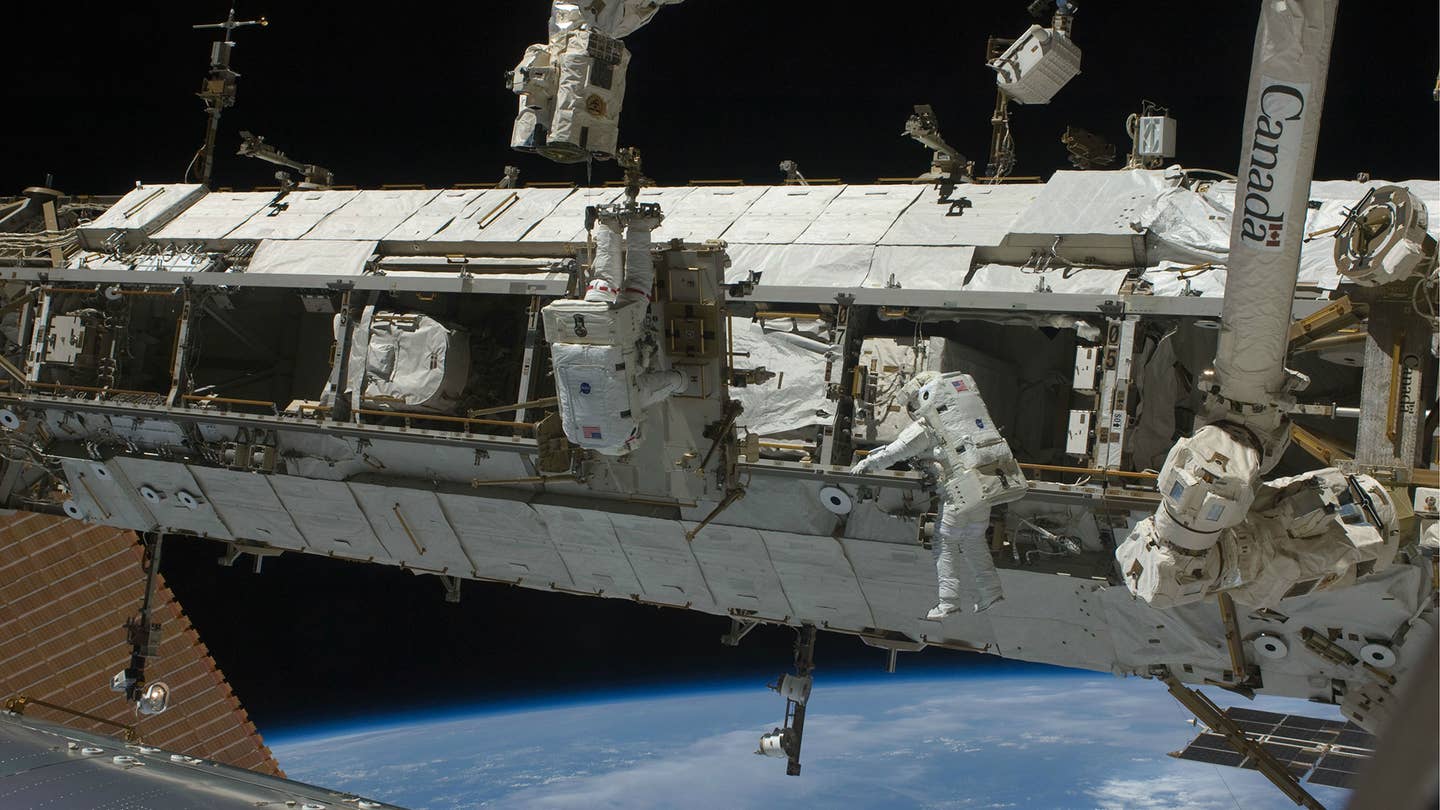SpaceX Who? Watch NASA Astronauts Spacewalk to Fix a Rail Car
Attention, Silicon Valley and El Segundo: This is how it’s done.

While the rest of the world was feting an admittedly amazing achievement—that of Elon Musk’s SpaceX completing a successful vertical landing—NASA astronauts went under the hood of the International Space Station. And actually, it was to fix a car—sort of. NASA’s Scott Kelly and Tim Kopra spent three hours outside the craft because a piece of the station, called the Mobile Transporter, got stuck when NASA tried to move it from the Mission Control.
The Mobile Transporter rolls on a football-field-length set of rails outside the International Space Station and can haul gear, carry up to two crew members and also help reposition the craft’s robotic arm.
But when it got stuck NASA didn’t have a choice about sending out Kelly and Kopra. For one, Kelly’s been onboard for eight months, so he probably could’ve used an outdoor stroll 253 miles above the earth. Besides, he has had a good deal of experience—this is his third spacewalk of this mission. And even though Kopra just arrived, last week this was his second walk floating above Earth.
Timing: The Russian Progress supply ship is inbound, expected to arrive on Dec. 23, carrying 2.5 tons of fuel, water, oxygen and food and, without the Mobile Transporter repositioned, docking would have been difficult if not impossible.

Speaking of, after fixing the rail car, NASA also wanted the astronauts to make a tweak to the dock so that future SpaceX missions could pair with the International Space Station.
Coincidentally, SpaceX also had a win, finally getting one of its Falcon 9 rockets to not only launch into space, but successfully get its stage one booster to land back on solid ground at Florida’s Cape Canaveral.
Two prior Falcon 9 rocket missions failed with the rocket boosters detonating during attempts to land them in the ocean, rather than on solid ground.
This is a massive deal for SpaceX. If you trash a rocket booster it’s essentially torching $16 million every time you launch. That’s a really expensive way to run a business. If SpaceX can successfully recover its Falcon 9 boosters, Musk says the cost is only $200,000 per launch (burned up almost entirely in the form of fuel). Suddenly the argument for privatization of space freight—saying nothing of travel—starts to pencil out, and selling Teslas probably becomes a nice little sideline for Musk.

